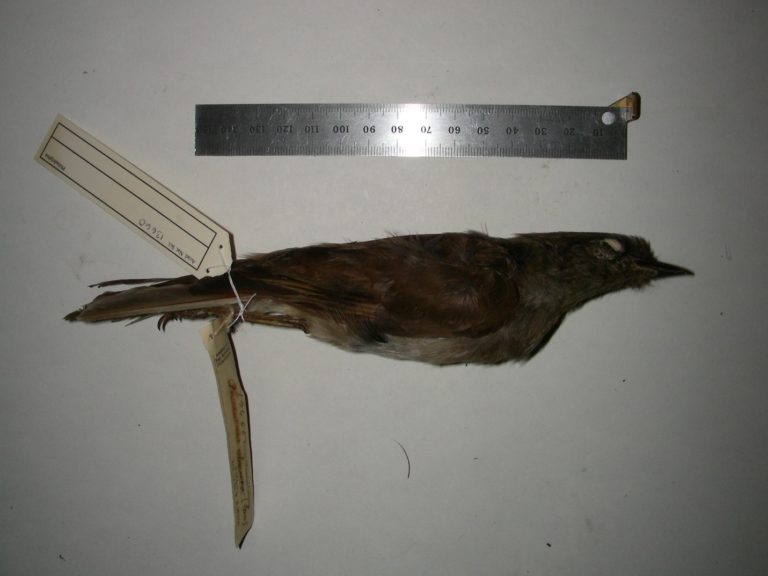Birdfinding.info ⇒ The last substantiated observation of Amaui was the collection of two specimens in Nu’uanu Valley on May 14, 1825. At that time, during the voyage of the HMS Blonde, it was reportedly common on Oahu, but it was not observed during the next major biological research expedition, which was in 1837, and there have been no reports thereafter.
Amaui †
Myadestes woahensis
Extinct. Formerly endemic to Oahu.
Identification
A large solitaire with brown upperparts and grayish underparts.
The immature plumage was brown with paler spots.

Amaui, ventral view. (ANSP No. 13660; Nu’uanu Valley, Oahu; May 14, 1825.) © Nate Rice / The Academy of Natural Sciences of Drexel University

Amaui, dorsal view. (ANSP No. 13660; Nu’uanu Valley, Oahu; May 14, 1825.) © Nate Rice / The Academy of Natural Sciences of Drexel University
Notes
Monotypic species. Traditionally considered conspecific with the Kama’o (M. myadestinus), Oloma’o (M. lanaiensis), and Oma’o (M. obscurus), collectively known as the Hawaiian Thrush (M. obscurus), but recognized as separate species since 1982. Sometimes also considered conspecific with just the Oloma’o, but genetic analyses of relatedness reportedly support treatment as a separate species.
IUCN Red List Status: Extinct.
References
BirdLife International. 2017. Myadestes woahensis (amended version of 2016 assessment). The IUCN Red List of Threatened Species 2017: e.T22708564A111775767. https://dx.doi.org/10.2305/IUCN.UK.2017-1.RLTS.T22708564A111775767.en. (Accessed June 13, 2020.)
Hume, J.P. 2017. Extinct Birds (Second Edition). Bloomsbury Publishing PLC, London.
Pyle, R.L., and P. Pyle. 2017. The Birds of the Hawaiian Islands: Occurrence, History, Distribution, and Status. Version 2 (January 1, 2017). http://hbs.bishopmuseum.org/birds/rlp-monograph/. B.P. Bishop Museum, Honolulu, Hawaii.
